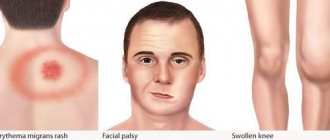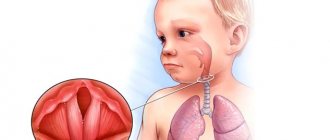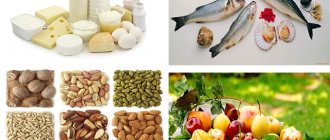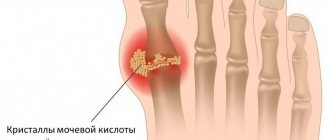De Quervain's tenosynovitis is a painful inflammation of the tendons at the base of the thumb. This process involves the tendons of the extensor pollicis brevis and abductor pollicis longus muscles. These muscles are located on the dorsal surface of the forearm and pass to the lateral side of the thumb through the fibro-osseous tunnel formed by the styloid process of the radius and the extensor retinaculum. Pain, which is the main complaint in this disease, occurs with abduction of the thumb, grasping movements and ulnar deviation of the hand. Swelling and hardening of the tissue may also be present.
What is de Quervain's tenosynovitis?
This is a narrowing inflammation of the 1st canal of the dorsal ligament of the wrist. Previously, the disease was called "washerwoman's disease", today it is named after the Swiss surgeon Fritz de Quervain (1895), who first described it.
The extensor tendons of the wrist and fingers pass through six tendon channels as they pass from the dorsum of the forearm to the dorsum of the hand. We are talking about very dense structures (fibrous tissue). The extensor tendons lie partially in the grooves of the bones and are pulled together by a transverse ligament - the retinaculum of the extensor tendons (Retinaculum extensorum), which fits them like a watch strap (Fig. 1).
The 1st canal of the dorsal carpal ligament is located above the styloid process of the radius (Processus styloideus radii) proximal to the base of the thumb. The tendons of the long abductor pollicis longus (APL) and the short extensor pollicis brevis (EPB) pass through the 1st canal of the dorsal carpal ligament (Fig. 2).
The APL tendon is often repeatedly split longitudinally and retracts the thumb at the saddle joint during muscle contraction. The EPB tendon straightens the thumb at the main joint. In many cases, the EPB tendon passes within the 1st canal of the dorsal carpal ligament completely or in places in its own separate canal. Therefore, with inattentive surgical intervention, incomplete splitting of the 1st channel of the dorsal ligament of the wrist may occur.
Both tendons (APL and EPB) help in abducting the thumb away from the rest of the hand and straightening the thumb in order to perform grasping and other movements. They also play a minor role in stabilizing and mobilizing the wrist.
De Quervain's tenosynovitis is a painful inflammation of the tendons and their sheaths in the 1st canal of the dorsal ligament of the wrist. Thickening of the walls of the tendon sheath and, depending on the circumstances, thickening of the tendon tissue lead to a narrowing of the canal and to the occurrence of painful sliding in it, up to a clearly noticeable and audible creaking/crunching sound. The consequence of inflammation can also be the gluing of tendons and tendon sheaths.
Clinically Relevant Anatomy
Clinically Relevant Anatomy
Extensor pollicis brevis
- Beginning: ½ of the posterior surface of the body of the radius, interosseous septum of the forearm.
- Attachment: base of the proximal phalanx of the thumb.
- Functions: wrist joint: radial abduction;
- thumb: extension.
Abductor pollicis longus muscle
- Beginning: posterior surface of the radius and ulna, interosseous septum of the forearm.
- Attachment: base of the first metacarpal bone.
- Functions: wrist joint: radial abduction;
- thumb: abduction.
Causes of de Quervain's tenosynovitis
The disease occurs between the ages of 30 and 50 years, in women 8 times more often than in men. De Quervain's tenosynovitis can be caused by a change in the shape of the 1st canal of the dorsal carpal ligament (for example, after nearby fractures of the radius) or other causes leading to swelling or thickening of the tendons or other parts of the canal. Repeated injuries, overexertion or inflammatory disease are some of the reasons that, with a certain tendency (predisposition), can cause this disease, but in most cases the causes cannot be found out. People who perform jobs that require frequently repetitive side-to-side movements of the wrist while simultaneously stabilizing it (hammering, running with ski poles) may be predisposed to de Quervain's tenosynovitis.
Histology
In the outer walls of the canals, formed as a result of the fusion of the dorsal transverse ligament with the synovial membrane, with a normal histological structure, five layers are distinguished. The internal one consists of endothelium with single- or double-rowed flat or cubic cells with spindle-shaped or oval nuclei with unclear cell boundaries. In many places, the endothelial layer expands, forming lymphatic vessels that regulate the amount of fluid in the tendon sheaths. Under the endothelium there is a narrow, loose connective tissue layer with blood vessels and nerve fibers. The connective tissue and endothelial layers together form the so-called sliding tissue of Bizalski.
Outside the sliding layer of Bizalsky there is a middle connective tissue layer, which is divided into two parts: the outer part has fibers directed transversely to the tendon axis, the inner part consists of connective tissue fibers located parallel to the tendon axis. The outer part of the middle layer is wider than the inner one. The outermost, i.e., fifth, layer is loose connective tissue in which blood vessels and nerves pass. Thus, the middle layer (third and fourth), together with the fifth, is the dorsal transverse ligament.
The study of microscopic preparations obtained from pieces of altered tissue taken during operations shows predominantly inflammatory changes and only in a small number of cases simple thickening of the connective tissue without any inflammatory changes.
In mild cases of de Quervain's disease, microscopic changes are expressed only in the thickening of the tendon sheath, in which elastic connective tissue plays a major role. In advanced cases, endothelial death is noted. The disappearing elastic connective tissue bundles of the middle layer are replaced in places by small groups of cartilaginous cells, which are arranged in rows following the direction of the connective tissue fibers. The thickening mainly affects the middle layer, which gradually dies as the process progresses. The destruction mainly affects the strengthening ligament.
Signs and symptoms of de Quervain's tenosynovitis
The first ailments occur in the area of the 1st channel of the dorsal ligament of the wrist, depending on the degree of inflammation, temporarily, periodically or at night. It is possible to transmit pain to the thumb and hand along the dorsal radial side (the area of distribution of the superficial sensitive branch of the radial nerve), as well as to the forearm along the dorsal radial side (the passage of the superficial sensitive branch of the radial nerve). The pain may intensify depending on the type of movement or load, especially with a strong grip, pinch grip, or rotational movement. A more or less pronounced swelling forms over the 1st canal of the dorsal carpal ligament, causing pain when pressed or tapped. Compared to palmar snapping finger syndrome (stenosing tenosynovitis), so-called “dorsales snapping” can rarely be observed. The classic phenomenon is a positive Finkelstein test: the thumb is pressed firmly against the palm, the fingers cover it on top, forming a fist; then unexpectedly, quickly and strongly tilt the wrist joint to the elbow side (little finger side) (Fig. 3); the patient feels very strong, sometimes electrifying pain in the area of the 1st channel of the dorsal ligament of the wrist, which is transmitted further distally (see above). At the same time, you can often feel and even hear a crunching (clicking) sound in the 1st channel of the dorsal ligament of the wrist.
Treatment of de Quervain's tenosynovitis
- Conservative:
- Avoiding/reducing certain painful activities
- Taking breaks during certain activities
- Immobilization with a plaster splint covering the forearm and thumb
- Local ice application
- Anti-inflammatory (antiphlogistikum) medications for tumor relief: in the form of tablets, syringes or suppositories (systemic administration)
- in the form of ointment or cream (locally)
- as a local injection (controversial method, risk of damage to tendons and nerves)
- Surgical: Surgical treatment is inevitable if conservative treatment has not been successful, the patient complains of severe pain or clinical examination shows a severe form of de Quervain's tenosynovitis.
Physical therapy
Friends, on July 17 in Moscow, as part of the #RehabTeam project, Anna Ovsyannikova’s seminar “Rehabilitation of the hand after a fracture of the distal radius (fracture of the “radius in a typical place”)” will take place.” Find out more... In addition, on July 18, she will conduct a seminar “Rehabilitation of the hand after fractures of the metacarpal bones (Boxer fracture).” Find out more...
Applying Ice/Heat
Heat can help relax tight muscles, and ice can help reduce inflammation of the extensor sheath.
Massage
Deep tissue massage in the area of the big toe can also help relax tight muscles, leading to less pain.
Stretching
You can also relax the tight muscles of the thumb eminence by stretching. This is facilitated by extension and abduction of the thumb.
Increased strength
- Finger extension with resistance.
- The position of the palm up is extension and abduction of the thumb.
- Thumb up - extension and abduction of the thumb.
- Radial deviation with resistance.
- Thumb up – supination with resistance.
- Thumb up – Opposing the thumb with resistance.
Increased range of motion
As mentioned above, stretching can help increase your range of motion. Applying ice/heat helps relax tight muscles, which also leads to increased range of motion.
Reduced swelling
The following measures may help reduce swelling:
- Thumb splinting.
- Corticosteroid injections.
- NSAIDs.
- Cold/warm.
- Massage.
- Stretching.
Preparation for surgery:
- Bleeding: The operation is performed on a hand that has been bled dry to ensure optimal visibility conditions and limit the risk of damage to important structures (nerves, blood vessels, tendons). The operated arm is wrapped in a rubber bandage and the shoulder is pressed with a pressure cuff during the operation.
- Disinfection of the skin and covering with a sterile cloth: To avoid infection, the skin is disinfected and the surgical site is covered with a sterile cloth.
- Magnifying glasses: The operation is performed using magnifying glasses, which help to clearly distinguish and thereby protect the important functional structures of the hand.
List of sources
- Thyroid diseases. Ed. L.I. Braverman. Moscow. Medicine, 2000, pp. 173-193.
- Petunina N.A., Trukhina L.V. Thyroid diseases. M.: GEOTARMEDIA, 2011. – P. 74-106.
- Dedov I.I., Melnichenko G.A., Andreeva V.N. Rational pharmacotherapy of diseases of the endocrine system and metabolic disorders. Guide for practicing doctors, M., 2006.
- Filatova S.V. Treatment of thyroid diseases using traditional and non-traditional methods. Ripol classic, Moscow. — 2010.— 256 p.
Sequence of the operation:
- Skin incision (Fig. 4)
- Preparation of the superficial sensory branch of the radial nerve
- Preparation of the 1st canal of the dorsal carpal ligament
- Dissection of the 1st canal of the dorsal carpal ligament and removal of the edges on both sides (Fig. 5))
- If necessary, incision in the canal of the septum between the APL and EPB tendons
- If necessary, removal of synovial tissue altered by inflammation
- Pulling both tendons, eliminating their possible adhesion to each other
- Tendons slide freely in the canal
- Ultimate control of the integrity of superficial nerve branches
- Closing the incision with a suture
- Sterile pressure dressing
Pathogenesis
Granulomatous infiltration of giant cells develops in the gland tissue in response to the introduction of the virus. The formation of giant cells is characteristic of autoimmune processes, and in some patients, autoantibodies to the thyroid gland appear in the blood. This fact indicates the presence of secondary autoimmune mechanisms in this disease. The introduction of the virus into a thyroid cell is accompanied by its destruction, while the contents of the follicle enter the blood and, against the background of destruction, thyrotoxicosis . Subsequently, the function of the gland is restored and temporary thyrotoxicosis is replaced by hypothyroidism and normalization of function (euthyroid state).
Postoperative treatment
- After the operation, the patient returns home, his fingers and especially the thumb and wrist should remain in motion, but not overworked.
- 5-7th day after surgery: first change of bandage (can be performed by a family doctor).
- 14th day after surgery: change of bandage and removal of stitches (can be performed by a family doctor).
- One day after the stitches are removed, the bandage is no longer needed. Start regular (3-4 times a day) exercises in cold water (add ice if necessary). Cold relieves swelling and pain. Patients who cannot tolerate cold take warm water.
- Five days after the sutures are removed, treatment of the postoperative scar begins. Calendula ointment (or other fatty ointments) is rubbed into the scar 4-5 times a day, it softens, becomes elastic, less painful and sensitive. Patting the scar, for example with a soft brush, also helps.
- Therapeutic exercises and/or occupational therapy are rarely required, but are prescribed immediately if movement difficulties occur.
- The duration of the patient's disability is usually 2-3 weeks.
Recovery prognosis
As a rule, with timely and competent treatment, specialists guarantee positive dynamics. If conservative procedures are implemented, it is possible to count on a favorable prognosis in 50% of situations. After surgery, it is possible to achieve the maximum positive effect. However, if after surgical manipulation the patient continues to overload the hand, a relapse of the disease may occur. This indicates the need to change the nature of the patient’s work activity after completion of treatment.
Healing process after surgery
Pain after surgery is usually minimal and most patients do not require painkillers.
Typical pain symptoms disappear after surgery, and the radiating pain goes away after a few days. In rare cases, friction is felt in the tendons, which completely disappears after a few weeks. Negative sensations in the postoperative scar largely disappear after the first 6-8 weeks; after 3-6 months, patients no longer complain of pain in the scar. However, only after 12 months can we say that the scar has completely healed. © Dr. Klaus Lovka
to the top of the page
Diet
Diet for thyroid disease
- Efficacy: therapeutic effect after a month
- Timing: constantly
- Cost of food: 1600-1700 rubles per week
A healthy diet and active lifestyle reduce the risk of viral infections and subacute thyroiditis. Patients' diets should include foods rich in omega-3 acids . These are flaxseed oil, arugula, green beans, seafood, fish, flax and chia seeds, dill, parsley, cilantro, beans, avocado. When choosing vegetable oils, it is better to choose olive, sesame, flaxseed, and walnut. Fish and seafood grown in natural conditions contain more omega-3 acids . For meat, it is better to prefer beef and veal, vegetables and fruits - any in season.
For any disease of the gland, vitamins and microelements are necessary:
- Selenium is contained in bran, whole grains, lentils, chickpeas, and beans.
- Zinc is found in seafood, pumpkin seeds, peas, beans, sesame seeds, peanuts, lentils, peanut butter, cabbage, spinach, zucchini, watercress.
- We get magnesium by eating wheat bran, nuts (cashews, almonds), soy, cocoa, buckwheat and oatmeal, brown rice, spinach.
- Sources of vitamin D are cottage cheese, fermented milk products, cheese, fish oil, vegetable oils, fish liver, and fish.
- Vitamin B 12 contains liver, fish, seafood, cheese, feta cheese, kefir, sour cream, green onions, lettuce, spinach.
- Sources of vitamin B9 are peanuts, broccoli, green onions, legumes, spinach, hazelnuts, salads, and wild garlic.







